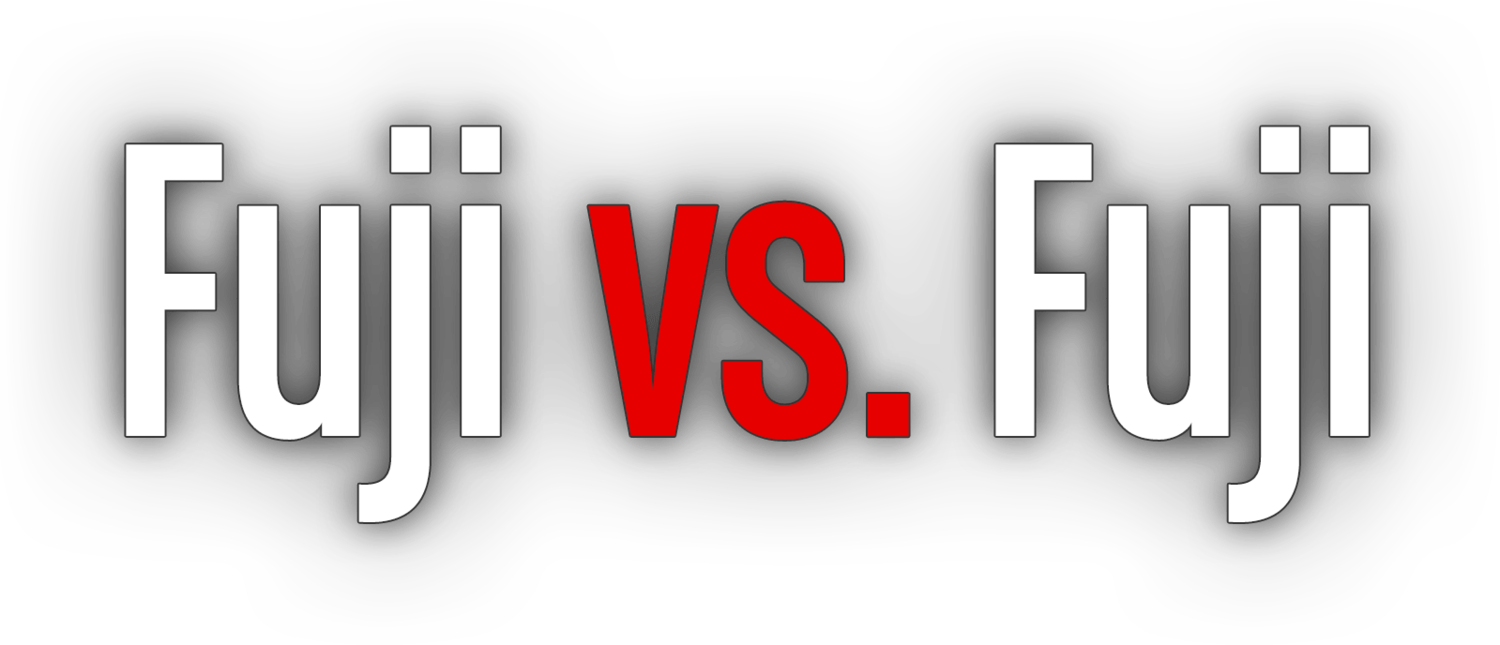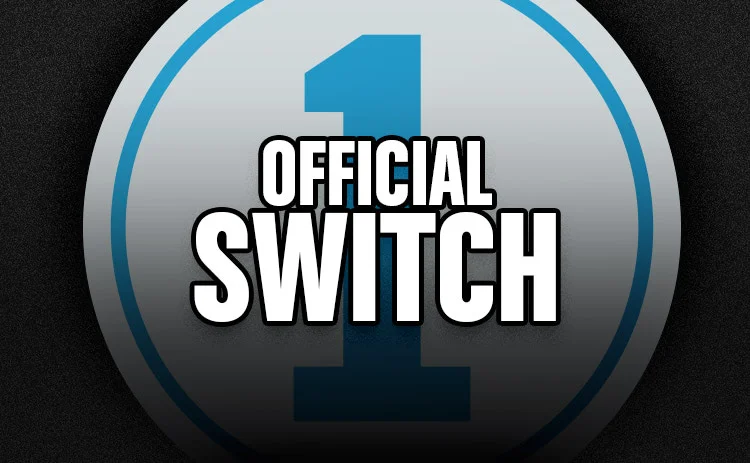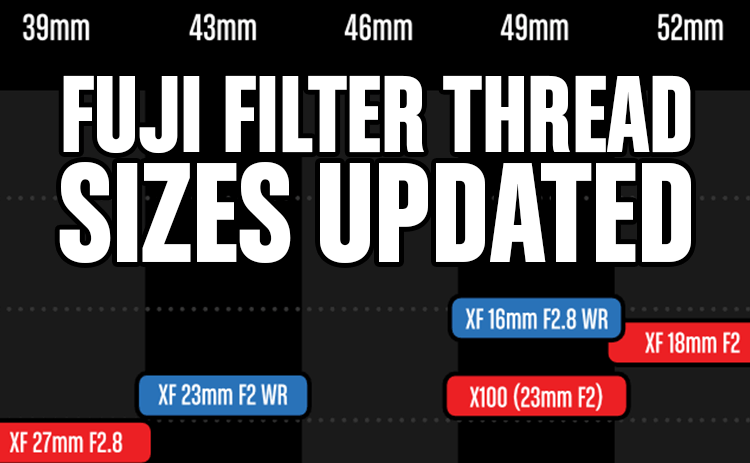Fujifilm Filter Thread Sizes
Last update: August, 2019
Introduction
If there’s what thing Fuji likes variety in, it’s filter thread sizes. With this graphic, I hope to make things easier to put together a selection of lenses, for those who make extensive use of screw-mount filters. It also includes whether or not a lens has optical image stabilization (OIS), weather sealedness, and special coating details.
Recommended strategies follow.
Strategies
While there has been four lens releases since the last iteration of this chart, only two of those—the XF 16mm F/2.8 WR and XF 16-80mm F/4 OIS WR—are likely to come into play when it comes to choosing filter sizes. The XF 8-16mm F/2.8 WR doesn’t accept filters, and the XF 200mm F/2 OIS WR’s filters are so large at 105mm, I can’t imagine stepping many lenses up to such an unwieldy filter size, so I’ve left those two lenses off the chart.
The other two lenses added fall within diameters at least one other lens was home to. The XF 16mm F/2.8 WR lines up with the X100’s 49mm filter diameter which I appreciate since I already have a circular polarizer and 10-stop ND at that size. That written, it’s a real shame Fuji weren’t able to bring more consistency to the F2(point 8)WR lineup.
The XF 16-80mm F/4 OIS WR meanwhile, lands in 72mm making 72 the second most crowded diameter. This could either drastically simplify, or potentially complicate one’s filter purchases.
Let’s talk through some sizes, from small to large.
43mm Weather Sealed
Lovers of weather sealed primes can cover 35mm and 50mm equivalence with just one set of 43mm filters. This doesn’t give you much of a focal length spread, but it could be a nice weather sealed dual camera set-up. For a more diverse focal range, read on.
Step-up to 46mm
It is a serious bummer that Fuji’s engineers couldn’t figure out a way to get the XF 50mm F/2 WR in a 43mm filter thread. That would have made the F2WR trio a no-brainer set of primes to buy. Fortunately, there’s an affordable solution.
A 43mm to 46mm step-up ring for whichever F2 lens(es) you pair with the XF 50mm F/2 WR won’t increase the overall size of your compact lens much. For anyone considering something like my Compact Prime Kit, I might grab a step-up ring or two, plus a matching 46mm lens cap→ to keep things consistent.
That strategy will only work if you don’t mind giving up on the LH-XF35-2 Accessory lens hood→ for both the XF 23mm F/2 WR and XF 35mm F/2 WR.
Step-up to 49mm
Of course Fuji had to design the XF 16mm F/2.8 WR with a filter thread other than 43mm or 46mm. If I didn’t love the 50mm (35mm APS-C) focal length so much, I’d buy the XF 16mm F/2.8 WR, and XF 50mm F/2 WR stepped up to 49mm for a simple two lens system.
62mm
Five lenses are plotted on the 62mm section of the chart, and choosing 3 of those lenses could make a very well rounded kit. I would likely forgo the zoom for to create a variation of my Ultimate Prime Kit, and having one set of filters fit all 3 lenses. I’d go XF 23mm F/1.4, XF 56mm F/1.2 APD, and XF 80mm F/2.8 Macro WR OIS, personally. 62mm is definitely where it’s at when it comes to top quality primes and filters.
For those looking to go wider, the XF 14mm F/2.8 could be added and stepped up from 58mm,→ which isn’t too bad. Alternatively, forego filters on the wide end altogether with a XF 8-16mm F/2.8 WR instead.
72mm – 1 lens, 1 filter size
Now that the XF 16-80mm F/4 OIS WR is around, we have 3 zoom lenses with a pretty decent range available in this one filter size. An XF 10-24mm F/4 OIS and XF 50-140mm F/2.8 OIS WR could make a lot of sense if the 24-50mm gap doesn’t bother you. Sadly there would be a pretty substantial overlap in pairing the XF 16-80mm F/4 OIS WR with the XF 50-140mm F/2.8 OIS WR.
What I’d recommend here is simple; 72mm filters on just one lens, the XF 16-80mm F/4 OIS WR.
72mm stepped up to 77mm
Of all the step-up scenarios, this one seems the most palatable as leaving a step-up ring on a larger zoom lens is less offensive than on a prime you might be trying to keep compact. One set of the standard 77mm filters and a couple step-up rings can cover the XF 10-24mm F/4 OIS, XF 16-55mm F/2.8 WR, XF 16-80mm F/4 OIS WR, XF 50-140mm F/2.8 OIS WR, and XF 100-400mm F/4.5-5.6 OIS WR for the pinnacle of zoom coverage. Personally, I’d likely leave out the XF 10-24mm F/4 OIS as suggested in my Invincible Landscaper kit to avoid overlap, and maintain weather resistance.
One thing to note for the XF 50-140mm F/2.8 WR is that while it is possible to add a 72-77mm step-up ring with the hood attached, you must take care not to screw it on too tight otherwise you risk not being able to get the ring or the hood off without breaking it. By the same token, if your circular polarizer’s not screwed no tight enough, it could loosen as you adjust your polarization.
Everything stepped up to 77mm
Because of when I was buying, and the equipment I had available to me at the time, I opted for a single set of 77mm filters plus a 67mm to 77mm step up ring for the XF 16mm F/1.4 WR and a 72mm to 77mm step up ring for the XF 10-24mm F/4 OIS and XF 50-140mm F/2.8 OIS WR. I don’t love having to attach and detach step-up rings that thwart my ability to use a hood, but I do like cutting down on both how much carry, and how much I’m spending on filters.
I have since purchased one of Fuji’s new 77mm lens caps,→—not one of the older “X Series” ones,→ which are inferior—and left a 67mm to 77mm step-up ring on my XF 16mm F/1.4 WR. I would do the same for my XF 10-24mm F/4 OIS, but given how seldom it is used, I think I’ll hold off.
Which Filters
My opinion on which filters to buy has changed slightly since writing my Long Exposure Photography Tips piece. For those looking to step-up to the standard 77mm thread size, I recommend going with Breakthrough Photography’s X4 Neutral Density filters.→ The biggest issue I have with B+W filters is the strong colour cast they exhibit. It can be addressed with a custom white balance setting, but Breakthrough Photography’s X4 filters have almost no colour cast to speak of. They’re newer to the market, and ain’t cheap,1 but they are the filter of choice for the photographer who makes no compromises.
They also make a huge variety of step-up rings that are wonderfully knurled for easy attaching, and detaching.
The one issue I previously had with Breakthrough is their smallest neutral density filter size was 49mm, which is fine for the X100 owners out there. Fortunately they seems to have driven their filter size down even further, and 46mm is now an option. If you prefer to keep your other F2 primes as small as possible, there’s a B+W filter.→
What About Square Filters?
There is a case to be made for something like Lee’s Seven5 filter kit.→ It comes at a price, but offers added flexibility in stacking filters, easy rotation of neutral grads, and alleviates vignetting that can be caused by circular filter rings.
Cokin makes a more affordable option,→ but as this post illustrates, the compactness of a camera like the X100 vanishes with the addition of either of these systems. That, for me, makes them a nonstarter, especially for an X100 body. I mean, just look at how wonderfully small that kit it is. When it comes to something like an X-T1 with XF 16-55mm f/2.8 WR, I’d be less concerned with adding bulk.
Conclusion
This sort of thing might sound like a minor detail to some, but these small annoyances can have a cumulatively big impact on shooting enjoyment. I’m a very big proponent of optimizing things as much as possible, even casual hobbies, to make them as effortless, and therefore fun, as possible.











